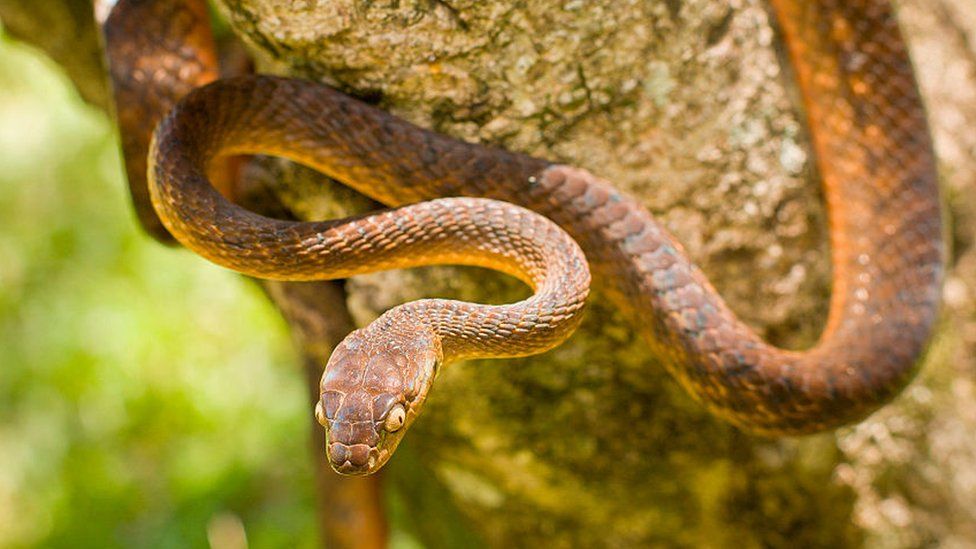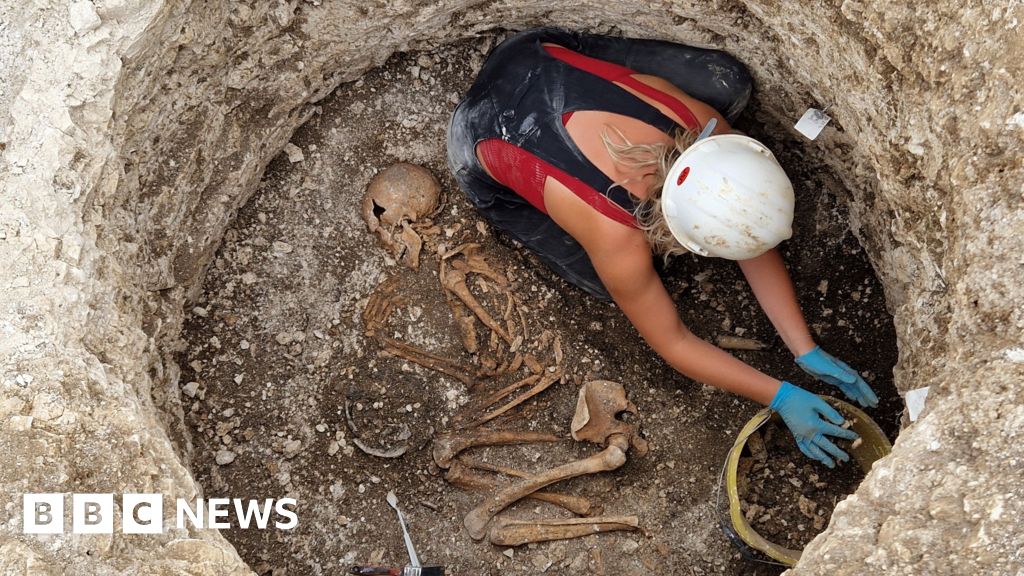ARTICLE AD BOX
By Leo Sands
BBC News
 Image source, Getty Images
Image source, Getty Images
As many as two million brown tree snakes are believed to now live on the tiny Pacific island of Guam
Scientists tallying the economic damage wrought by invasive pests across the world found two species are responsible for more harm than any other.
The American bullfrog and brown tree snake have collectively caused $16.3bn (£13.4bn) in global damage since 1986.
In addition to ecological harm, the invasive pair have ruined farm crops and triggered costly power outages.
Researchers hope their findings will encourage more investment to help block invasive species in the future.
Writing in Scientific Reports, the scientists held the brown tree snake as singlehandedly responsible for $10.3bn worth of damage in total - partly by spreading uncontrollably across several Pacific islands.
In Guam, where the reptile was introduced by US marines last century, the snake's sheer present day population causes mass power cuts because they slither over electrical wires and cause expensive damage.
More than two million brown tree snakes populate the tiny Pacific island, with one estimate calculating as many as 20 inhabitants per acre of Guam's jungle.
Island ecosystems are thought to be more vulnerable to invasive species - where they pose a greater threat of extinction to native animals and fauna.
Image source, Getty Images
Image caption,The American bullfrog is known to eat almost anything - including other members of the same species
In Europe exploding numbers of American bullfrogs have required ambitious and costly management programmes.
To prevent the spread of the amphibian - which can grow up to 30cm (12 inches) in length and half a kilo (17.6oz) in weight - officials have been forced to install expensive frog-proof fencing around known breeding sites.
Fencing off just five ponds to stop the amphibians escaping cost German officials €270,000 (£226,300), an older EU study cited by the authors found.
The amphibian is said to eat nearly anything, including other bullfrogs.
Another species, the common coqui frog, was blamed for causing economic damage in a different way: their extremely loud mating song is believed to have triggered a decline in property values in the areas where they have infested.
The study's authors hope their findings will encourage officials to invest more in pest controls and other biosecurity measures in the future.
You might also be interested in:
The BBC's Rebecca Morelle joins wildlife biologist James Stanford on the trail of the brown tree snake

 2 years ago
29
2 years ago
29








 English (US) ·
English (US) ·